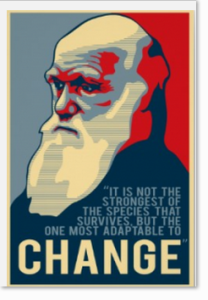A culture of marketing innovation in a business is an environment where traditions can be challenged. Your success in building a culture of being innovative in your business depends on making them happen. No business attribute is more important today as that of innovative, as many, many businesses are on the brink of irrelevance. Here we will explore being innovative in marketing.

Check out our thoughts on building innovation.
You need to have the ability to challenge business traditions as often as possible. It’s also important to recognize that culture comes from the people—it is the people. Think about the individuals within your organization—what are their personalities like? Who are they outside of work? What tickles their fancy? All of these things lend to the culture of your organization, and ultimately your products and services.
Click here for an excellent short video on innovative marketing ideas.
Unfortunately, most companies fail to unleash their most valuable resources: human innovation, imagination, and original thinking. They lack a systematic approach to building a culture of innovation and then wonder why they keep getting beaten to the punch.
Make the secrets of building an innovative culture the main strengths of your company and the pillars of its long-term growth and success.
Here are some useful ways how to help move toward an innovative culture in your business:
Marketing innovation … have big goals
Make the goals big and avoid business as usual incremental approaches. Make the performance you seek to depend on focused attention and persistence.
Start small
Start small with just one part of the organization. Here is an example. ITW is a diversified manufacturing company that produces a wide array of products from industrial packaging to power systems and electronics to food equipment to construction products. It is a highly profitable company nearly 100 years old.
Yet this big, old company, which is nestled in a traditional industry, thinks small. The leaders at ITW believe that being nimble, hungry, and entrepreneurial are the ingredients for business success. As a result, any time a business unit reaches $200 million in revenue, the division “mutates” into two $100 million units. Like an amoeba, the unit subdivides so it stays hungry and nimble.
The company would rather have 10 independently run an innovative $100 million units than a single, bureaucratic, and clunky $1 billion unit. Guess what? It’s a great environment of change and adaptation.
Companies that can stay more curious and nimble, have a better ability to change and adapt more easily. They have a stronger sense of urgency and are not afraid to embrace change. They put their curiosity, imagination, and creativity to work
Marketing innovation strategy … avoid isolation
Separate the part of the organization you are starting with. Wall it off from the rest of the corporate bureaucracy. In addition, don’t forget to leave the standard bureaucracy behind. Eliminating the bureaucracy helps to stimulate risk-taking and acts as a counter to old organization inertia.
Encourage curious, imaginative minds
Become big believers in change and adaptation. Such believers contribute heavily to creative minds. We’re first curious about something, and it’s that curiosity that drives us to create new ideas.
Try to think of inventors who created something without first being curious or imaginative. Difficult isn’t it?
Rapid iteration and feedback
Put a strategy in place to handle failures and learn from them. Use an experimental approach to fail early, often, to increase the learning and move forward more rapidly.
Marketing innovation examples … build intrinsic rewards
The best intrinsic rewards are built on if-then external motivators. You want to incentivize the behavior you want more of and eliminate behaviors you dislike. The basic needs are essential. Here are the ones I recommend:
Autonomy – the desire to steer your own ship
Mastery – the desire to excel at what you are doing
Purpose – the need for the journey to mean something
Create a spirit of collaboration
Your employees should feel like members of one big family. They are the biggest assets of your business.
Innovation rarely happens in a vacuum. As the author Steve Johnson says, chance favors the connected minds. When people are together, talking, laughing, thinking, exploring — they’re going to throw out ideas. These ideas trigger something in someone else’s mind, and it snowballs. Before long, this group of folks has developed a creative change that wouldn’t have been possible without the collective collaboration.
See our article on employee engagement as a backbone of customer culture.
Don’t fall prey to the myth that only some people are adaptable and you’re not one of the chosen few. We are all adaptable; it’s just a matter of figuring out in what way.
So find things you’re curious about and that are interesting to you, use your imagination a little, stay motivated and work at it, and surround yourself with others who are doing the same.
